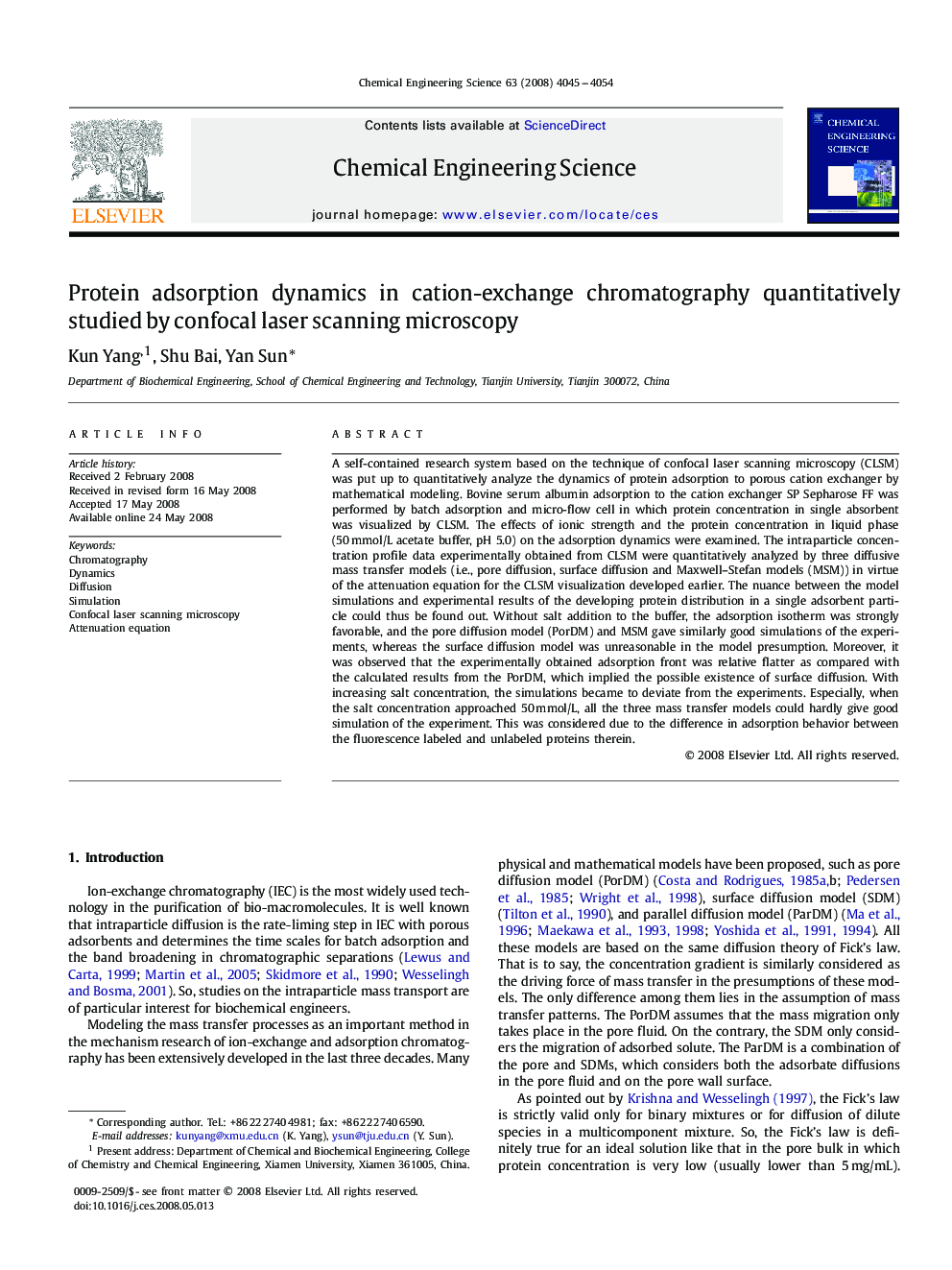| Article ID | Journal | Published Year | Pages | File Type |
|---|---|---|---|---|
| 158315 | Chemical Engineering Science | 2008 | 10 Pages |
A self-contained research system based on the technique of confocal laser scanning microscopy (CLSM) was put up to quantitatively analyze the dynamics of protein adsorption to porous cation exchanger by mathematical modeling. Bovine serum albumin adsorption to the cation exchanger SP Sepharose FF was performed by batch adsorption and micro-flow cell in which protein concentration in single absorbent was visualized by CLSM. The effects of ionic strength and the protein concentration in liquid phase (50 mmol/L acetate buffer, pH 5.0) on the adsorption dynamics were examined. The intraparticle concentration profile data experimentally obtained from CLSM were quantitatively analyzed by three diffusive mass transfer models (i.e., pore diffusion, surface diffusion and Maxwell–Stefan models (MSM)) in virtue of the attenuation equation for the CLSM visualization developed earlier. The nuance between the model simulations and experimental results of the developing protein distribution in a single adsorbent particle could thus be found out. Without salt addition to the buffer, the adsorption isotherm was strongly favorable, and the pore diffusion model (PorDM) and MSM gave similarly good simulations of the experiments, whereas the surface diffusion model was unreasonable in the model presumption. Moreover, it was observed that the experimentally obtained adsorption front was relative flatter as compared with the calculated results from the PorDM, which implied the possible existence of surface diffusion. With increasing salt concentration, the simulations became to deviate from the experiments. Especially, when the salt concentration approached 50 mmol/L, all the three mass transfer models could hardly give good simulation of the experiment. This was considered due to the difference in adsorption behavior between the fluorescence labeled and unlabeled proteins therein.
